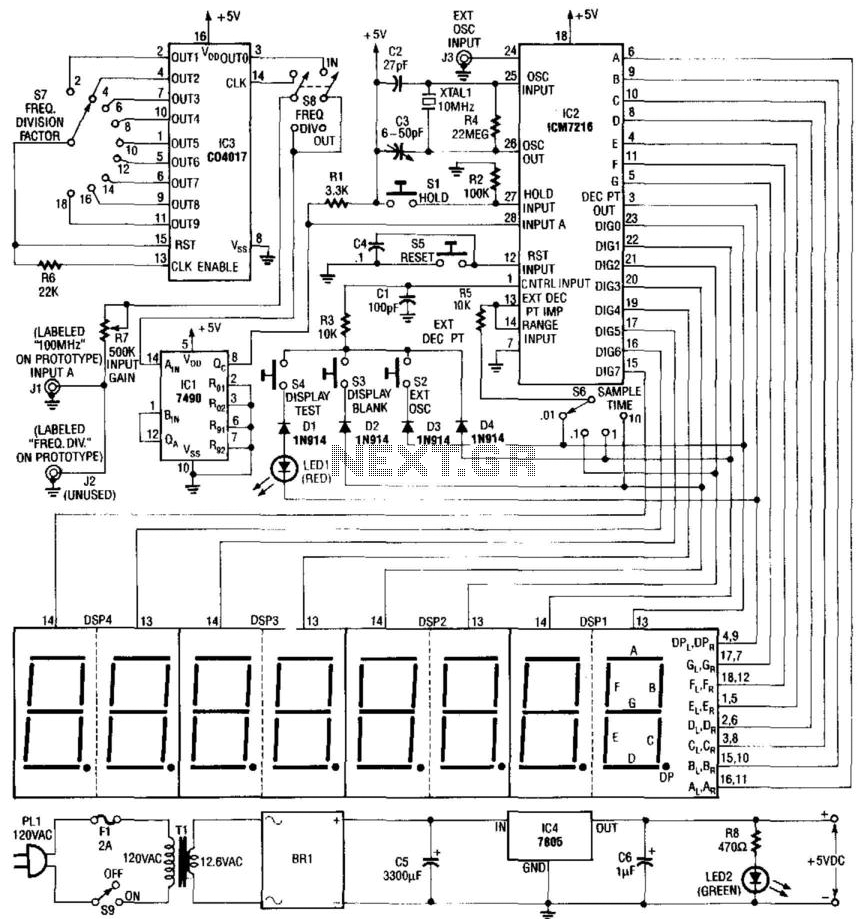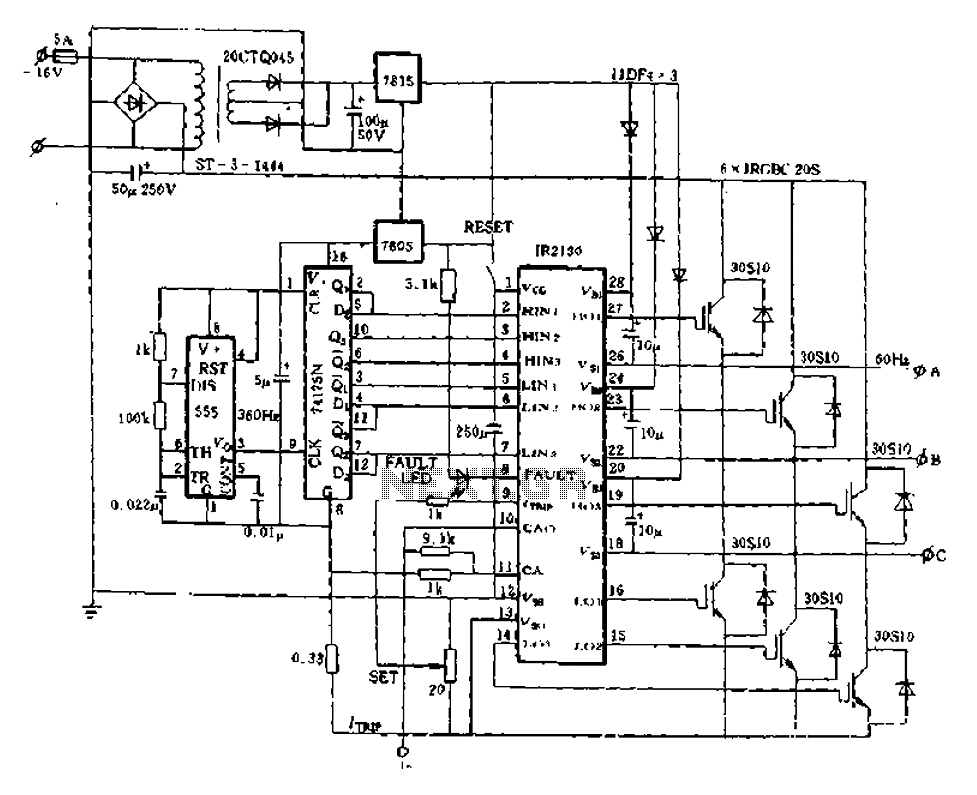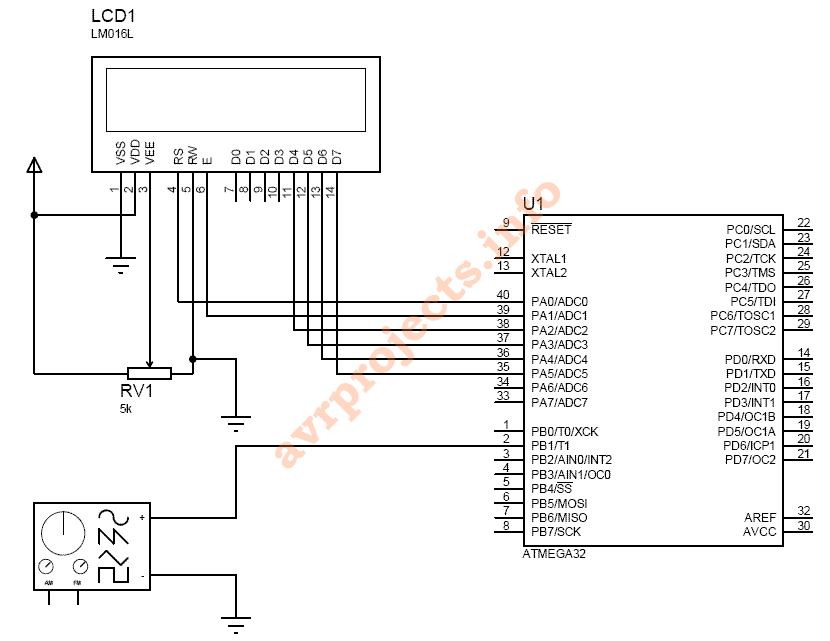
Frequency Counter For PC

This document outlines the construction of a compact frequency counter utilizing an inexpensive PIC microcontroller and several seven-segment LED displays. A PIC programmer necessary for programming the PIC 16F628 is accessible on DL4YHF's website. Requests for programmed PICs or circuit boards cannot be accommodated due to limited availability of spare time; however, all required information can be found on various "do-it-yourself" pages. If the counter initially displays an unusual frequency, entering setup mode to reset the frequency offset to zero may be necessary, as PIC programmers sometimes fail to erase the EEPROM where this offset is stored. A flashing decimal point signifies a frequency in kilohertz, while a steady point indicates a frequency in megahertz, which is typically relevant for dip meters and QRP transceivers. The circuit diagram is straightforward, and a complete Eagle schematic has not yet been created; however, other builders have provided similar resources. The initial prototype was constructed on a breadboard with round pads, and a comparable design can be employed for a single-sided printed circuit board. Four bridges, indicated in red, must be soldered onto the board before attaching the seven-segment displays. It is important to note that the crystal is mounted on the underside. Some display signals are routed using thin enamelled copper wire, particularly those connecting two pads. Resistors R4 and R11 control the brightness and power consumption. For low-current displays, a resistor value of 1 kOhm or greater is recommended, while older displays may require 390 Ohms. The PIC's output ports can source and sink 20 mA per pin, resulting in slightly overloaded digit drivers with 390 Ohm resistors per segment when displaying "8". If power consumption is not a concern and older displays requiring higher current are used, four PNP transistors can be employed in the cathode drivers as non-inverting emitter followers without the need for base resistors (base connected to PIC, collector to ground, emitter to common cathode). High-efficiency displays such as the "SC39-11SRWA" from Kingbright do not require driver transistors, as they are sufficiently bright with a 1 kOhm current-limiting resistor per segment. These displays can be ordered from Reichelt under the catalog number "SC 39-11 RT", which are essentially the same as the SC39-11SRWA displays known for their brightness. Low-efficiency types such as SC39-EWA should be avoided to prevent poor visibility. The second prototype featured a 5-digit display on a single-layer PCB, with segment resistors used to connect the display board to the PIC board, typically mounted at a 90-degree angle behind the display. To facilitate the connection between the PIC and display board, a second firmware variant with slightly modified pin assignments was developed. In this iteration, the PIC's clock frequency was raised to 20 MHz to enhance resolution at higher frequencies. Component values for this variant include R1 and R8 at 1k, R9 and R10 at 10k, D1 through D4 as 1N4148 diodes, T1 as BC547 or a similar transistor, C1 and C2 at approximately 22pF (selected to tune the crystal to precisely 20 MHz), C3 at 100nF, and Q1 as a 20 MHz crystal. The PIC used is the 16F628, programmed with the firmware "counter2.hex". The layout of the PIC board for display variant 2 includes a decoder for the fifth digit and additional breadboard space for a preamplifier, if necessary. The image should be printed at exactly 300 dpi, achievable with software such as IrfanView. The display is mounted on the underside of the PIC board, with square pads near the display serving as cathode connectors (from left to right: d1 and d4 are outputs directly from the PIC, while d5 is driven by transistor T1). The component placement on the PIC board is straightforward, but it is crucial to position the bridge under the PIC socket correctly.This document describes the construction of small frequency counter with a cheap PIC microcontroller and a few seven-segment LED digits. The main features of the frequency counter are: A PIC programmer which you need to program your PIC 16F628 is available on DL4YHF`s website.
Please do not ask me to send programmed PICs or even circuit boards to you, my spare time is too short - and you will find anything you need on these "do-it-yourself" pages ! If your counter shows a strange frequency initially, enter setup mode to set the frequency offset to zero (it sometimes happens that PIC programmers don`t erase the EEPROM where the frequency offset is stored).
A flashing decimal point indicates a frequency in kilohertz, a steady point indicates a frequency in Megahertz - which is more common for the intended use in dip meters and QRP transceivers. The circuit diagram is so simple that I didn`t make a complete Eagle schematic for it yet (other builders did, see links ).
The first prototype was built on a breadboard with round pads. A very similar design could be used for a single-sided printed circuit board. Four bridges (drawn in red colour below)must be soldered on the board before fitting the seven-segment displays. Note that the crystal is mounted on the bottom side ! Some of the display signal are routed with thin enamelled copper wire, especially those between two pads.
The resistors R4. R11 set the brightness and the power consumption. If you find some suitable low-current displays, use 1 kOhm or even more. Very old displays require more current, use 390 Ohms in that case. The PIC`s output ports can source and sink 20 mA per pin, so the digit drivers are a slightly overloaded with 390 Ohm resistors per segment when displaying "8. ". If you don`t have to care for power consumption and want to use old displays with high current, use four PNP (!) transistors in the cathode(!) drivers as non-inverting emitter followers, no base resistors are required (base to PIC, collector to ground, emitter to common cathode).
For the displays "SC39-11SRWA" by Kingbright it is unnecessary to use driver transistors, these high-efficiency displaye are bright enough with 1 kOhm current limiting resistor per segment. In you can -or, at least, could-order these displays at Reichelt, look for "SC 39-11 RT"in their catalogue (in fact, these used to be SC39-11SRWA displays; aka "super bright" / high-efficiency display.
Do NOT use the low-efficiency types like SC39-EWA. You will be disappointed by a dark display, at least with the resistor values stated above). For the second prototype, a 5-digit display was made on a single layer PCB shown below. The segment resistors were used to connect the display board with the PIC board (which is usually mounted in a 90 ° angle behind the display). To make connection between PIC and display board easier, a second firmware variant was created with slightly modified pin assignment.
On this occasion, the PIC`s clock frequency was increased to 20 MHz to have a better resolution at higher frequencies. Component values for variant 2 (as shown above): R1. R8 = 1k, R9=R10=10k, D1. D4=1N4148, T1=BC547 or similar, C1=C2 about 22pF (select them to tune the crystal to exactly 20 MHz), C3=100nF, Q1=20 MHz, PIC: 16F628 programmed with firmware "counter2.
hex". Layout of the PIC board (display variant 2). The board contains the decoder for the 5th digit, and some breadboard area for the preamplifier (if needed). Print this image with exactly 300dpi, which can be achieved with IrfanView and other utilities. The display is mounted on the lower side of the PIC board as shown below. The square pads near the display are the cathode connectors (from left to right: d1. d4 are outputs directly from the PIC, d5 is driven by transistor T1). Placement of the components on the PIC board (Ridiculously simple, isn`t it But don`t forget to place the bridge under the PIC socket bef
🔗 External reference
Please do not ask me to send programmed PICs or even circuit boards to you, my spare time is too short - and you will find anything you need on these "do-it-yourself" pages ! If your counter shows a strange frequency initially, enter setup mode to set the frequency offset to zero (it sometimes happens that PIC programmers don`t erase the EEPROM where the frequency offset is stored).
A flashing decimal point indicates a frequency in kilohertz, a steady point indicates a frequency in Megahertz - which is more common for the intended use in dip meters and QRP transceivers. The circuit diagram is so simple that I didn`t make a complete Eagle schematic for it yet (other builders did, see links ).
The first prototype was built on a breadboard with round pads. A very similar design could be used for a single-sided printed circuit board. Four bridges (drawn in red colour below)must be soldered on the board before fitting the seven-segment displays. Note that the crystal is mounted on the bottom side ! Some of the display signal are routed with thin enamelled copper wire, especially those between two pads.
The resistors R4. R11 set the brightness and the power consumption. If you find some suitable low-current displays, use 1 kOhm or even more. Very old displays require more current, use 390 Ohms in that case. The PIC`s output ports can source and sink 20 mA per pin, so the digit drivers are a slightly overloaded with 390 Ohm resistors per segment when displaying "8. ". If you don`t have to care for power consumption and want to use old displays with high current, use four PNP (!) transistors in the cathode(!) drivers as non-inverting emitter followers, no base resistors are required (base to PIC, collector to ground, emitter to common cathode).
For the displays "SC39-11SRWA" by Kingbright it is unnecessary to use driver transistors, these high-efficiency displaye are bright enough with 1 kOhm current limiting resistor per segment. In you can -or, at least, could-order these displays at Reichelt, look for "SC 39-11 RT"in their catalogue (in fact, these used to be SC39-11SRWA displays; aka "super bright" / high-efficiency display.
Do NOT use the low-efficiency types like SC39-EWA. You will be disappointed by a dark display, at least with the resistor values stated above). For the second prototype, a 5-digit display was made on a single layer PCB shown below. The segment resistors were used to connect the display board with the PIC board (which is usually mounted in a 90 ° angle behind the display). To make connection between PIC and display board easier, a second firmware variant was created with slightly modified pin assignment.
On this occasion, the PIC`s clock frequency was increased to 20 MHz to have a better resolution at higher frequencies. Component values for variant 2 (as shown above): R1. R8 = 1k, R9=R10=10k, D1. D4=1N4148, T1=BC547 or similar, C1=C2 about 22pF (select them to tune the crystal to exactly 20 MHz), C3=100nF, Q1=20 MHz, PIC: 16F628 programmed with firmware "counter2.
hex". Layout of the PIC board (display variant 2). The board contains the decoder for the 5th digit, and some breadboard area for the preamplifier (if needed). Print this image with exactly 300dpi, which can be achieved with IrfanView and other utilities. The display is mounted on the lower side of the PIC board as shown below. The square pads near the display are the cathode connectors (from left to right: d1. d4 are outputs directly from the PIC, d5 is driven by transistor T1). Placement of the components on the PIC board (Ridiculously simple, isn`t it But don`t forget to place the bridge under the PIC socket bef
🔗 External reference





